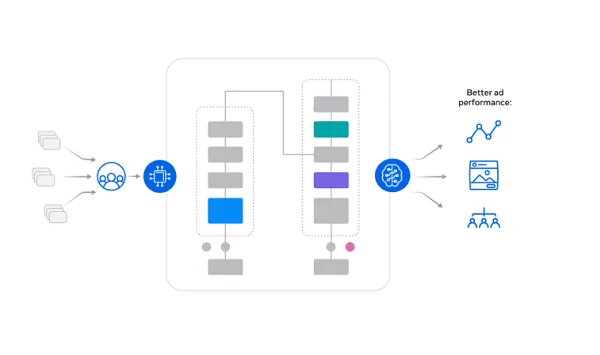There are reasons John Roth just got tapped to head the long-sojourning Cadillac division of General Motors. And they might start with what’s happening at a GM parts warehouse in Burton, Michigan.
The automaker recently invested $100 million in modernizing its largest aftermarket-parts processing center there, one of the operations Roth has headed until just now as GM’s global vice president of customer care and aftersales. To keep up with booming sales of “original equipment” replacement parts under brands such as AC Delco, Roth spearheaded a worker-friendly, automation-focused overhaul of the facility in Burton as well as lesser revamps of other parts facilities in Memphis and in Ypsilanti, Michigan.
How Roth and his colleagues have been looking out for the ergonomic comfort and productivity-boosting aims of these facilities holds lessons for other chiefs in America’s manufacturing and warehousing sectors, especially those running unionized facilities.
“This has been a couple-year journey with our [United Auto Workers union] partners in mind,” Roth told Chief Executive. “They’ve been part of the solution set: What do they need to make their jobs easier and more comfortable and make their engagement grow?”
Roth’s solution has included an unprecedented investment in automation in the facilities, including gee-whiz box-making equipment, with decisions about ergonomic and efficiency measures stemming from research not just within the auto industry but also even in warehouses that disperse frozen chicken nuggets.
“This is about investing in people and taking advantage of the growth opportunity that we see, as well as being able for them to have a day off,” Roth said. “We won’t have dramatic changes in our employment base, but investment in a healthier lifestyle. We can lean into growth without hurting people.”
In the case of GM’s aftermarket business, warehouses are busting at the seams because part sales have clipped along annually at double-digit rates of increase since Covid, as consumers and fleets keep their vehicles running longer. The age of the average vehicle on U.S. roads now is 12.6 years, GM said, up from about 12 years just since 2022. Most of them are internal-combustion-powered vehicles, of course, and Roth said predictions are for growth of another 12% in this sector over the next three years.
One expected reason for a continue boom: Many Americans will try to stretch more life out of their conventionally-propelled existing vehicles as they circle warily around purchasing all-electric replacements.
GM has been leaning into this development with gusto. In Burton, that means installing new automated storage, retrieval and loading systems as well as a conveyor system to move parts to employee workstations. The facility opened only in 2019. It currently employs about 1,460 people, who ship about 15,000 parts orders daily.
Here are some things Roth has learned along the way about how to introduce automation into existing facilities with an experienced workforce:
Ask what they want. As GM’s largest parts warehouse got busier, the company wanted to make sure that “people weren’t hunched over all day and that they’re doing more productive work,” Roth said. “So you talk with them and you hear their voices in your head as you go into the marketplace looking for solution sets. You bring them along on the journey and give them an opportunity to improve their engagement.”
In GM’s case, the solutions have included a CNC-based machine that produces the right sizes and types of boxes automatically and an automated storage and retrieval system that “brings the work to [employees] at their station. We figured out how to store 46,000 pallets of material and produce it when they need it, on demand, instead of sending employees out into a million-square-foot warehouse.”
Search creatively for solutions. Because GM wanted to establish the cutting edge of human-machine interface in its industry, Roth and his colleagues went outside the confines of automotive to look for ideas for how to go about it. Their research included a visit to a cold-storage facility in Atlanta where ice cream, chicken nuggets and other food products are kept at minus-10 degrees Fahrenheit.
“Equipment in that environment is hard to deploy; it’s a little different challenge,” Roth said. “We were understanding what they were trying to accomplish in that environment, which was to not have people standing around in refrigerators. They installed an automated storage and retrieval system. That same integrator is working with us.”
Count on falling dominoes. GM wants its employees to be happy, sure, especially as the most experienced ones become scarcer and more valuable. But also, as Roth noted, their satisfaction with work helps ensure better results in the marketplace, where GM parts customers include dealers, fleet managers and individual consumers.
“When employees are happy,” he said, “you know you’re going to have happy customers. Employees will do what they need to do to get the right product out the door to the right person. This is about taking advantage of [sales growth] and doing it with a better-engaged employee base.”
The post GM Shows How To Create Cutting Edge of Human-Machine Interface appeared first on ChiefExecutive.net.









































![Spider-Man Is Back in Black With the Green Goblin in New Funko Pop! Figures [Exclusive] Spider-Man Is Back in Black With the Green Goblin in New Funko Pop! Figures [Exclusive]](https://static1.colliderimages.com/wordpress/wp-content/uploads/2025/03/spider-man-the-animated-series-green-goblin.jpg)



























